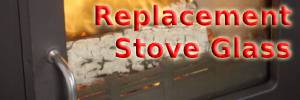One of the most daring demolition projects ever undertaken at Sellafield has reached a key point.
The site’s tallest chimney is being brought down brick-by-brick using a platform that climbs up the structure itself.
Workers on top of the platform have been removing the concrete and steel structure by hand at a rate of one metre a week.
The painstaking approach is necessary because the 61m chimney sits on top of an old nuclear reprocessing plant and is surrounded by buildings containing hazardous material.
That means traditional explosive, compressed air, or water-related demolition techniques can not be used.
Simon Rowe, of Sellafield Ltd, said:
We’ve safely demolished 15 metres of the stack, taking a quarter off its height.
That means it no longer poses a risk to any of the active plants around it.
It’s a major achievement and removes the radiological risk associated with this landmark of the Sellafield skyline.
The tricky nature of the demolition job wasn’t the only complicating factor of the project.
Because the chimney provided ventilation to many other buildings around it, a new stack had to be built and those ventilation lines re-routed.
The new chimney – known as the Separation Area Ventilation project – began operating in 2016.
The older chimney is due to disappear completely by 2020.
Its demolition is being delivered via a collaboration between Sellafield Ltd, supply chain partners Nuvia, and their sub-contractors Delta International and Alimak Hek.
The self-climbing platform is similar to the method used to demolish chimneys at London’s iconic Battersea Power Station.
It is held in place by 84 rubber pads which press against the barrel of the chimney. Only friction prevents it from falling.
To move upwards, half of the pads are released, raised and tightened. The other are then raised and the platform inches up to the top of the stack.
It began its 61m ascent in November 2016 and arrived nine months later in August 2017.
|
|
||||||
Check Todays Deals on Ebay.co.uk Your Comments:
Custom Search

|
You are in:
UK /
Croston / North West
Find any Town in the UK, or Use UK map Local Google MAP for Croston Check Todays Deals On Amazon.co.uk Check Todays Deals on Ebay.co.uk 


 Be Seen - Advertise on Qlocal Corporate Sponsors
Southport Piano and Music Academy Washroom Services Maximum Grounds Maintenance Southport Garden Services Ormskirk Garden Services Sanitary Bins Nappy Bins & Waste Disposal Confidential Shredding Services Legionella Risk Testing London Washroom Services Croydon Washroom Services Hounslow Washroom Services Wandsworth Washroom Services Havering Washroom Services Sanitary Bins London Clinical Waste London General Waste London Legionella Testing London Shredding London Tatoo Waste London Preston Bird Control Blackpool Bird Control
UK, Local Online News Community, Forums, Chats, For Sale, Classified, Offers, Vouchers, Events, Motors Sale, Property For Sale Rent, Jobs, Hotels, Taxi, Restaurants, Pubs, Clubs, Pictures, Sports, Charities, Lost Found
croston,
croston News,
|
|||||





 Reply With Quote
Reply With Quote